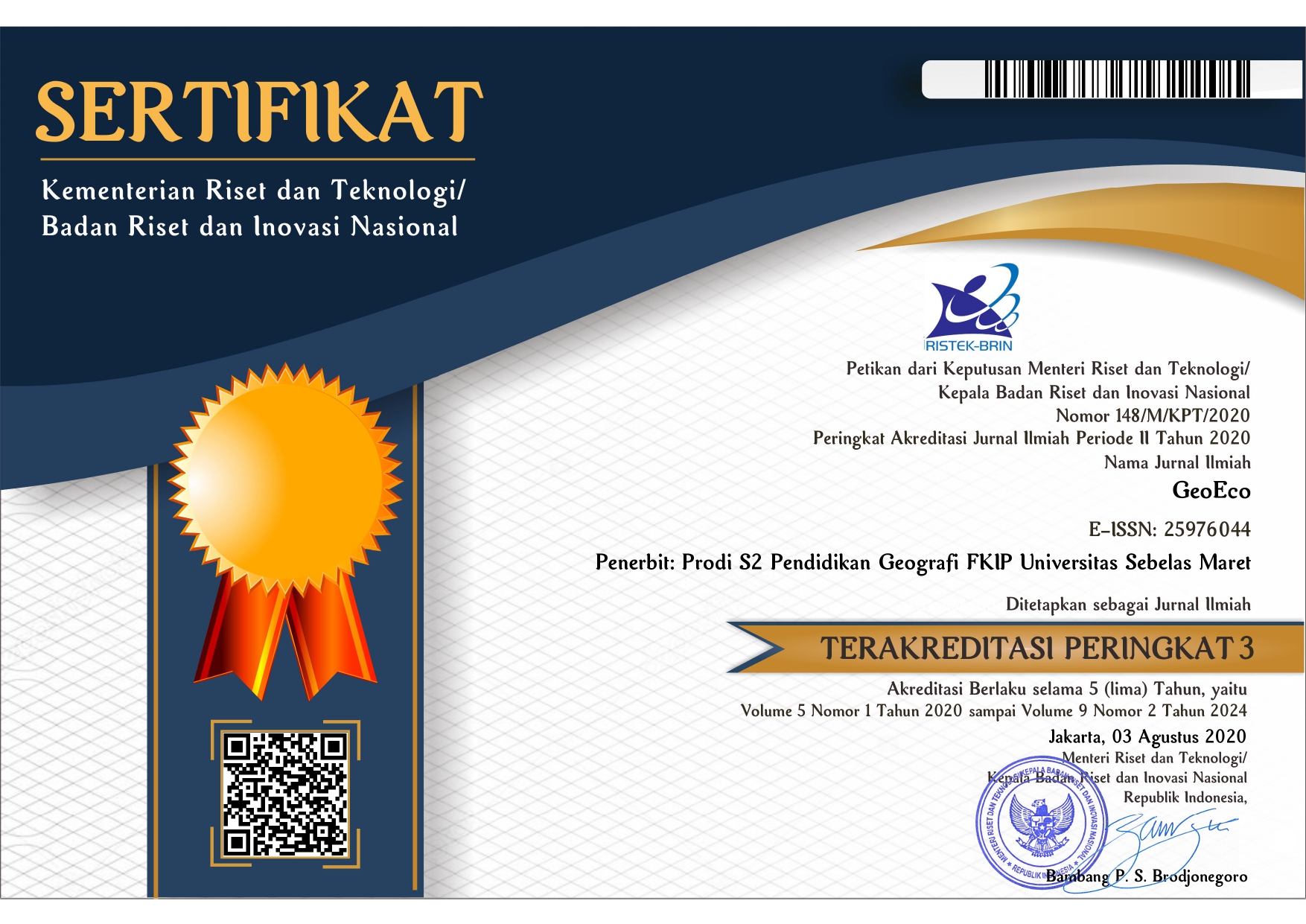DETERMINANTS OF ADOLESCENT MARRIAGES INHIBITING THE MATURING OF MARRIAGE AGE
Abstract
Incidence of adolescent marriages in South Kalimantan is still high and acts an obstacle to maturing the marriage age program. This paper aims to analyze the dominant factors which contribute to the maturity of women’s marriages by modifying the social ecological framework theory. This survey study had 180 respondents with 113 women who were married under 19 years and 47 respondents who were married at 19-30 years, while the anlaysis was using bivariate and multivariate analysis. The variables used refer to the social ecological framework theory and there are 2 variables used here, namely individuals (education and work status) and interpersonal (father’s education, father’s occupation and the economy of the respondent’s previous household). The results of the bivariate analysis are in line with social ecological framework theory. Furthermore, the results of multivariate analysis show that all of these variables are 35.7 percent influencing the adolescent marriages. Based on multivariate analysis, the most influential determinants on adolescent marriages are respondents from poor households before marriage, father’s working in agriculture, respondents do not work, fathers do not graduate from elementary school and respondents have low education.
Keywords
Full Text:
PDFReferences
BPS&UNICEF. (2016). Kemajuan yang Tertunda: Analisis Data Perkawinan Usia Anak di Indonesia. In Statistik Indonesia 2016 (p. 98). Badan Pusat Statistik. BPS. (2020). Prevention of Child Marriage Acceleration that cannot wait (p. 71). PUSPAKA. Chae, S., & Ngo, T. D. (2017). The global state of evidence on interventions to prevent child marriage. GIRL Center Research Brief, 1. https://www.popcouncil.org/uploads/pdfs/2017PGY_GIRLCenterResearchBrief_01.pdf Handayani, E. (2014). Faktor-Faktor yang Berhubungan Dengan Pernikahan Usia Dini Pada Remaja Putri di Kecamatan Tambusai Utara Kabupaten Rokan Hulu. Jurnal Maternity and Neonatal, 1(2), 200–206. Hurlock, E. (1999). Development Psycology: An Approach Along The Live Circle (Translation). Erlangga. Mcleroy, K. R., Bibeau, D., Steckler, A., & Glanz, K. (1988). An Ecological Perspective on Health Promotion Programs. Health Education & Behavior, 15(4), 351–377. https://doi.org/10.1177/109019818801500401 Muntamah, A. L., Latifiani, D., & Arifin, R. (2019). Pernikahan Dini Di Indonesia: Faktor Dan Peran Pemerintah (Perspektif Penegakan Dan Perlindungan Hukum Bagi Anak). Widya Yuridika, 2(1), 1. https://doi.org/10.31328/wy.v2i1.823 Nasution, R. (2016). The Oppression of Women in the Anom Marriage Tradition: Subaltern of Women in Banjar Tribe in a Postcolonial Perspective. Yayasan Pustaka Obor Indonesia. National Population and Family Planning Board (BKKBN), Statistics Indonesia (BPS), Ministry of Health (Kemenkes), and I. I. (2018). Indonesia Demographic Health Survey 2017. 623. Undang-Undang Republik Indonesia Nomor 16 Tahun 2019 Tentang Perkawinan, (2019). http://www.koalisiperempuan.or.id/wp-content/uploads/2019/10/Salinan-UU-Nomor-16-Tahun-2019-.pdf Pitoyo, A. J., Kiswanto, E., Karmila, E., Ardiansyah, J., Widyaningrum, N., & Arbitraningrum, Y. T. (2011). Final Report Child Marriage in Indonesia. Pohan, N. H. (2017). Faktor yang Berhubungan dengan Pernikahan Usia Dini terhadap Remaja Putri.. Jurnal Endurance, 2(3), 424–435. https://doi.org/10.22216/jen.v2i3.2283 Santrock, J. (2003). The Development of Adolescence (Translation). Erlangga. Wahyuni, S., Zirman, & Natariasari, R. (2009). Pengaruh Motivasi Terhadap Minat Mahasiswa Akuntansi Untuk Mengikuti Pendidikan Profesi Akuntansi (PPAk). 1–15.
Refbacks
- There are currently no refbacks.












.png)

